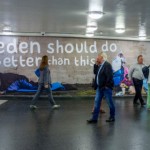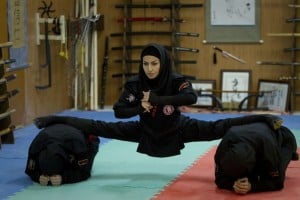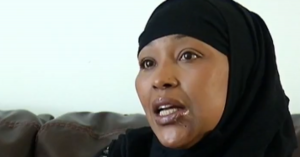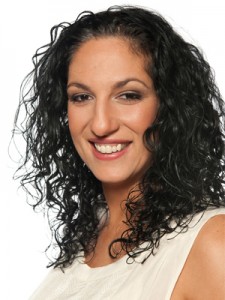A Singaporean news channel produced a series of Youtube videos featuring selected athletes with disabilities, or para-athletes. One featured athlete is Aishah Samad, a shooter who had to have all four of her limbs amputated after going into septic shock and contracting gangrene in the hospital on the way home from a trip to China.
In the short 5-minute video, at least a fifth of the entire video focuses solely on footage of Aishah’s mobility aids. The video starts with a drawn-out shot of someone putting a bionic arm on her amputated arm. There is one scene that shows only her prosthetic limbs and not even in relation to the rest of her (01:32). Yet another shot (04:41) focuses on her prosthetic legs, then bionic arms, before zooming out to her upper body sitting on a wheelchair.
This producer had also approached my sister, Nurul, a para-athlete herself for a filming. Initially, the producer wanted to film my sister’s ‘daily routine’, consisting of showering, eating, getting dressed and most importantly, transferring from her bed to her wheelchair. Presumably, these scenes would be similar to a video done of another local athlete. The producer explained that she found this important for people to understand the challenges of persons with disabilities (PWDs).
This isn’t the first time that a film producer has found that daily activities are utterly fascinating when done by persons with disabilities. Many years ago, my sister had been approached by a another TV channel for filming that would involve scenes like showering and getting dressed. Their favourite request is inevitably to film her transferring from a bed to the wheelchair.
First of all, why the special attention to someone’s daily routine? Does it serve a purpose or is it just a chance to gawk at how someone without arms could possibly cook for herself? Would a feature of able-bodied athletes focus so much on them eating breakfast? (Maybe what they ate for breakfast, but probably not long draw, close-up shots of fingers and forks.) I call this disability porn: there is no purpose to showing these scenes except for the able-bodied to gawk and feel better about themselves.
Second, whether a PWD is willing to reveal such details or present themselves in ways that they are not usually seen (ie without mobility aids) raises questions about personal privacy. Each person – whether able-bodied or not, but especially if not – is entitled to determine their own privacy, comfort levels, and self-presentation.
“Me getting in and out of my wheelchair is like you sitting down and standing up. It’s not a struggle for me because I have figured out a routine that works for me for the past 30 years,” says Nurul.
Fortunately, after some back-and-forth and suggestions on what kinds of scenes could be shown instead in order to give a better picture of the unique challenges of para-athletes, my sister’s video turned out to be very different from that of Aishah. Instead of long shots focusing on her wheels and joystick, there are scenes of her taking notes and stretching, and shots of her various sports equipment.
The mainstream media impacts how we think about certain groups of people. Visual media has an especially strong impact because we absorb what we see without thinking. Nurul points out that the purpose of media that aims to educate or raise awareness about PWDs should aim for getting the public to act better.
“I cannot see how watching what I do in my personal life is going to encourage the public to help me hold lift doors open, tap my [public transport] card, carry my food to my table, not park across access ramps, etc.”
While it’s a step forward to feature para-sports, which receive much less attention than able-bodied sports, it’s important not to reduce para-athletes to mere tokens or shadows of able-bodied ones. Every PWD has their own history, which affects how they see themselves. Some may have born able-bodied, some may have slowly lost motor functions, and some may have had the same challenges since they were little.
Despite these differences, too much emphasis on one’s mobility aids rather than the person herself demonstrates a failure to see the person in all their human complexity and through the lenses of all their identities. For example, what about other aspects of their lives as women, as Muslim women? What are the challenges they face in the mosque? In practising dress codes? These are all equally important perspectives to address.
“Public education on disability needs to go beyond ‘overcoming’ medical conditions and daily activities. No two disabled persons ‘struggle’ daily the same way anyway.”












